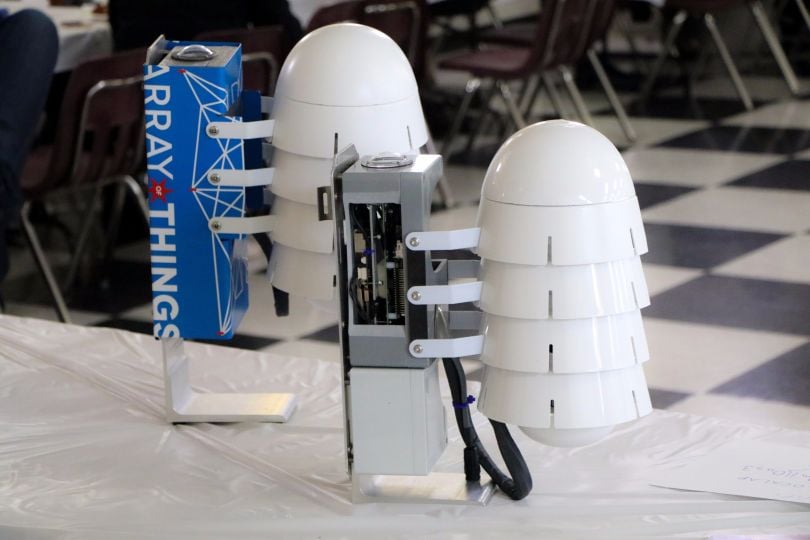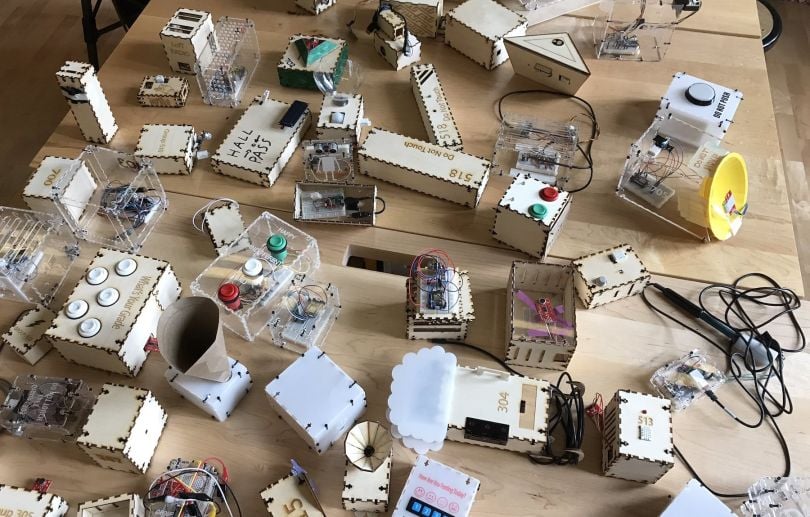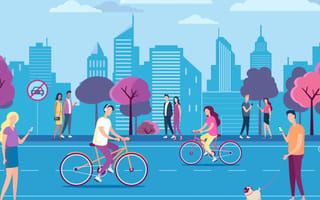What if an app could tell you the safest route home at night, or help you reduce your exposure to air pollution?
Perched on traffic poles across Chicago, nearly 200 IoT devices are analyzing the chaos of city life to make that possible.
The devices are part of the University of Chicago and Argonne National Laboratory’s smart city project, Array of Things, and, together, they function as a fitness tracker for the city. The project seeks to help city officials and civilians understand things like traffic patterns and causes of noise and air pollution, with the goal of making the city healthier and more livable.
Lead computer scientists Charlie Catlett, Pete Beckman and Rajesh Sankaran launched the project in 2015 as a way to incorporate science into the infrastructure of the city. The project is slated to install 500 nodes across the city to flesh out its hyperlocal data collection, and has played a key role in helping Chicago rank as the eighth smartest city in the world, according to a study published in the Journal of Urban Technology.
“We thought it would be an interesting challenge to build a device that would allow scientists to measure the city and would provide the city with useful data.”
To build it, their team collaborated with community members, local government officials and scientists to create a platform and device that would be affordable, flexible and, most importantly, trustworthy.
“We thought it would be an interesting challenge to build a device that would allow scientists to measure the city and would provide the city with useful data,” said Catlett, who’s also the director of the Urban Center for Computation and Data. “At the same time, we wanted to do it in a way that was visible and would engage the youth in the city.”

Future-proofing devices through modular design
Inside Beckman’s office at Argonne National Lab, the guts of an Array of Things node are splayed across the table, giving off the appearance of a stormtrooper helmet filled with CPU parts.
The modular IoT device is on its fourth evolution, Catlett said, and contains a couple dozen sensors, Linux devices for remote programmability and a Google Edge TPU processor to collect and send data from the source. The devices operate through Array of Things’ Waggle platform, its open-source wireless sensor platform.
Each iteration of the device was built on conversations with scientists and community members, Catlett said.
Catlett, Beckman and Sankaran came up with the idea for the project in 2011, when the city planned to replace sodium street lights with LED ones. Since bucket trucks would already be commissioned to work on the streetlights, they thought it’d be the perfect opportunity to incorporate a science project into the city infrastructure.
To figure out what that would look like, the engineers spoke with a variety of scientists and local government officials about what data they’d find most useful. Their input helped them map out the proposed capabilities of their smart city project.
“The reason we designed Waggle was that scientists needed a platform that they can experiment with and add things to to do these kinds of projects.”
Beckman then devised the Waggle platform in 2013, which proved crucial in making the project work. His platform allowed the team to update the devices remotely and supported a modular design, which meant that new sensors could be added at any point.
“The reason we designed Waggle was that scientists needed a platform that they can experiment with and add things to to do these kinds of projects,” said Beckman, who’s the co-director of the Northwestern Argonne National Institute of Science and Engineering.
In 2015, the team earned a $3.1 million grant from the National Science Foundation to install up to 500 Array of Things devices.
Avoiding the ‘Big Brother’ effect
From the project’s inception, Catlett said the goal was to create a device that didn’t just collect data but would also engage the community.
To avoid blending into the city architecture or coming off as an omnipresent Big Brother system, Array of Things commissioned the Art Institute to develop a design that would capture people’s attention and spark their imaginations. The project resulted in a rocket-shaped device, with a blue-and-white color scheme and star to represent Chicago.
“We wanted the residents of the city to see these things and go, ‘Oh, that’s the thing that gives me data about the city,’” Catlett said. “So it becomes ‘Me watching the city,’ versus ‘The city watching me.’”
Meanwhile, the engineers spent six months collecting comments from local communities at public meetings and online. Out of the 400 comments they received, the biggest concerns revolved around privacy and data protection, Catlett said.
“We wanted the residents of the city to see these things and go, ‘Oh, that’s the thing that gives me data about the city.’”
The group then sought input from university privacy policy experts, industry experts and the ACLU to map out a privacy policy and Ethical Oversight Committee.
According to the policy, any image or sound captured by the device must be processed at the source, rather than be stored as raw data. The device might snap an image of pedestrians and cars crossing a street at rush hour and report on the number of people without saving any images or license plate information. Similarly, it might record audio and register the decibel levels for a given increment, then discard the audio file.
This prevents the devices from keeping a continuous record of what’s happening at an intersection, Catlett said. The data is then uploaded into an open-sourced API that anyone can access.
There’s also a pre-approved list of algorithms that can be run on the device to prevent tracking anything that could violate a person’s privacy. Any new algorithms must be approved by the city and the Ethics Oversight Committee, which is co-chaired by the Chicago Department of Innovation and Catlett, along with members from academia, nonprofits, the tech industry and the community.
“I would say we’ve taken a much more rigid approach to privacy than is ethically or legally required for cameras in public,” Catlett said. “And we did that because it was important to us that the community was comfortable with what we’re doing.”

Empowering the community with data
While Catlett said it’s too early to predict what impact the project will have as it transitions from the research phase to a science service phase, he said his team is already experiencing buy-in from the community.
The team has received requests from city officials, science groups and community members to install nodes and begin collecting data on everything from traffic to pollution levels. They’ve also worked with Lane Tech High School students to host workshops, in which they’ve built their own devices to track things like noise levels outside Wrigley Field.
“Residents really understand the difference between giving the city an anecdote and having data.”
Catlett envisions a time where Chicago policymakers can analyze trends on noise pollution, climate or traffic to inform proactive policies. And, already, community members are leading the way. A couple of years ago, Catlett said he received an email from a school crossing guard on the North Side requesting a node to be installed at her intersection. Her reason? Trucks were illegally using her street and she wanted the data to prove it.
“Residents really understand the difference between giving the city an anecdote and having data,” Catlett said. “What she was really saying was that she could either give the city one anecdote after another about traffic, or she could provide them with data so that they can make a policy to intervene.”




